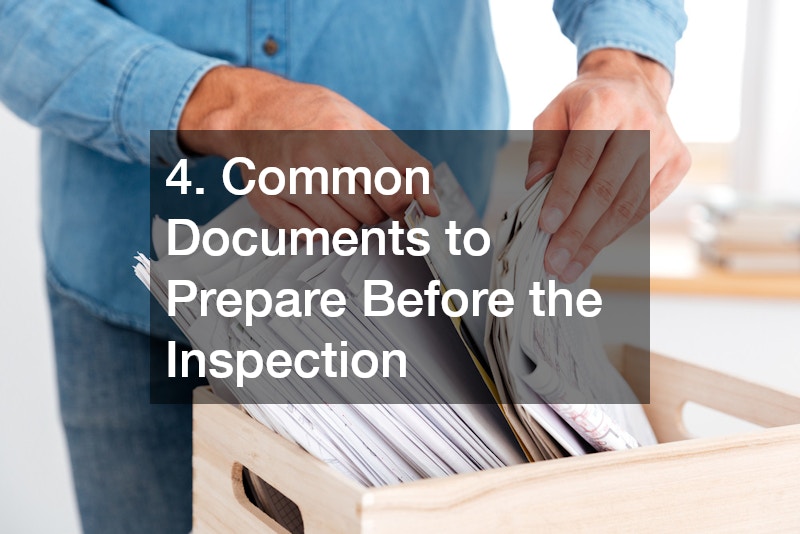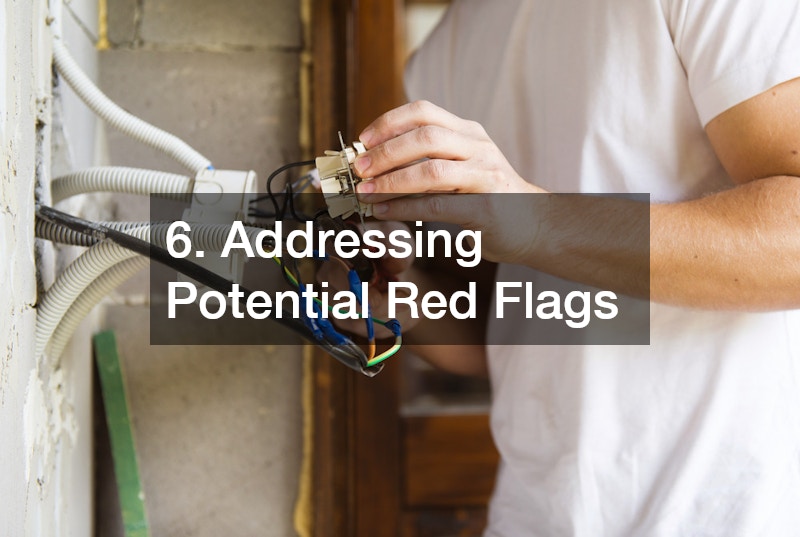Disclaimer: The insurance information provided here is for general knowledge only and does not replace advice from licensed insurance professionals. Please consult a qualified advisor for coverage decisions.
Home insurance inspections can feel intimidating, but they are an essential part of ensuring your property is adequately covered. With preparation and understanding, the process can be seamless and even beneficial. Here’s what you need to know to navigate your home insurance inspection like a pro.
1. Why Home Insurance Inspections Matter
Home insurance inspections are vital for both homeowners and insurance providers. For insurers, the inspection helps assess the risk associated with your property, allowing them to offer accurate policy terms and premiums. For you, it’s an opportunity to ensure your home is protected against potential damages and to address risks before they become costly claims.
Without an inspection, insurers may rely on generic data, which could lead to higher premiums or inadequate coverage. By allowing an inspection, you ensure that your homeowners insurance policy reflects the actual condition and value of your home.
2. The Purpose of a Home Insurance Inspection

A home insurance inspection serves multiple important purposes, benefiting both homeowners and insurance providers. It goes beyond simply assessing the value of your property—it helps ensure that your home is protected from potential risks while also ensuring your insurance policy is accurately tailored to your needs. Here’s a closer look at the key objectives behind a home insurance inspection.
Protecting All Parties
The primary purpose of a home insurance inspection is to assess the safety, condition, and replacement cost of your property. For insurance providers, this evaluation is essential in determining the level of risk associated with insuring your home. Insurers want to ensure that the home meets underwriting standards and doesn’t present hidden risks that could lead to costly claims in the future.
A thorough inspection helps the insurer evaluate factors such as the structural integrity of the home, the age and condition of key systems like heating, ventilation, and air conditioning, and the safety features present, such as smoke detectors and security systems. By identifying potential hazards—whether that’s a deteriorating roof, outdated wiring, or improper drainage—insurers can gauge the risk they are taking on. This helps them make informed decisions on coverage, potentially leading to more accurate premiums.
Furthermore, an inspection gives insurers a clear picture of the home’s replacement cost, which is crucial for determining how much coverage you would need in the event of a total loss. If the property is over or under-insured, it could lead to significant financial gaps, leaving you vulnerable during a claim. Thus, the inspection ensures that both parties are protected, offering accurate coverage that reflects the true value and condition of your home.
Tailoring Your Policy
Home insurance inspections also serve the important function of tailoring your insurance policy to reflect the specific features and needs of your home. Every home is unique, and the inspection provides an opportunity to highlight these unique aspects that may influence coverage. For example, if your home includes valuable upgrades such as high-end finishes, custom installations, or modern security systems, these features could impact the overall value of your property and the insurance you need.
Unique home features such as solar panels, home theaters, or even a luxury kitchen could add significant value, and their inclusion in your policy ensures you’re covered for potential repairs or replacements in case of damage. In the same vein, if your home includes any safety or risk-reducing features like storm shutters, an advanced fire suppression system, or an upgraded foundation, these could potentially qualify you for discounts or lower premiums.
The inspection process allows these details to be factored into your policy, ensuring you are adequately covered for any specific risks tied to the unique characteristics of your property. If these features are not noted or considered during the inspection, you could end up underinsured or without coverage for those particular assets, leaving you vulnerable to financial loss in the event of an incident. This is why a thorough inspection helps tailor your policy to your exact needs, offering peace of mind that your home is protected in every way.
3. What Inspectors Typically Look For

A home insurance inspection is a detailed process that evaluates your property’s condition to determine its insurability. Inspectors focus on various critical areas, ensuring the home is safe, secure, and meets underwriting standards. Each part of your property, from the roof to the foundation, plays a role in assessing risks and ensuring the right coverage for your needs. Here’s what inspectors typically examine in detail.
Roofing
The roof is one of the most important components of your home, as it protects the structure from weather-related damage. Inspectors will assess the roof’s age, material, and overall condition. They check for missing shingles, damaged flashing, sagging areas, and signs of leaks, such as water stains on the ceiling or attic. If the roofing is nearing the end of its lifespan, the inspector may recommend repairs or replacement, as a deteriorating roof increases the likelihood of future claims.
Plumbing
Inspectors examine the plumbing system to identify potential issues like leaks, water damage, or outdated materials. They’ll check under sinks, near appliances, and around water heaters for signs of corrosion or leaks. The type of piping material—whether it’s copper, PEX, or older galvanized pipes—also impacts the home’s risk profile, as certain materials are more prone to failure. Functional and well-maintained plumbing reduces the chance of water damage claims.
Electrical Systems
Electrical systems are closely scrutinized for safety. Inspectors will evaluate wiring types, the condition of the circuit breakers, and the presence of ground fault circuit interrupters (GFCIs) in key areas like bathrooms and kitchens. Outdated wiring, such as knob-and-tube or aluminum wiring, poses a fire risk and may require updating to meet modern safety standards.
HVAC Systems
The heating and cooling systems in your home are crucial for comfort and energy efficiency. Inspectors assess the age, maintenance history, and overall functionality of the HVAC systems. They’ll check for issues such as dirty filters, inadequate ventilation, or outdated equipment that might need replacement. A well-maintained HVAC system not only ensures a comfortable living environment but also reduces the likelihood of costly repairs or claims related to system failure.
Foundation and Structure
A strong foundation is vital for your home’s stability and longevity. Inspectors examine the foundation for cracks, settling, or signs of water intrusion that could compromise the structure. They’ll also look at the walls and floors for unevenness or bowing, which could indicate underlying problems. Structural integrity is critical for preventing costly repairs and ensuring your home remains insurable.
Exterior Features
Inspectors will also evaluate the exterior of the home, including siding, windows, and landscaping. Cracked or peeling siding, damaged windows, and gaps that could allow pests or water intrusion are common concerns. Landscaping elements, such as overgrown trees or shrubs that touch the house, are evaluated for potential risks, as they can increase fire hazards or cause damage during storms.
Additional features, like swimming pools, trampolines, or decks, are reviewed for liability risks. For example, an unfenced pool or loose decking boards could result in higher premiums or a request for safety upgrades. Tree limbs hanging over the house are another red flag, as they can cause significant damage during storms and should be trimmed.
By thoroughly examining these areas, inspectors help homeowners and insurance providers address potential risks and ensure the property is adequately protected.
4. Common Documents to Prepare Before the Inspection

Preparing the right documents ahead of your home insurance inspection can make the process smoother and more efficient. These documents provide inspectors with valuable information about your property’s condition, past improvements, and ongoing maintenance. Here’s what to gather before the inspection.
Essential Paperwork
Proof of Renovations or Upgrades
If you’ve recently made improvements to your home, it’s essential to provide documentation, such as receipts, contractor invoices, or permits. These records verify that your upgrades, like a remodeled kitchen or a new deck, meet safety standards. For example, if you hired a home improvement company to replace your roofing or install energy-efficient windows, sharing the paperwork ensures these enhancements are considered when tailoring your policy.
Maintenance Records
Regular upkeep is a sign of a well-maintained home, which insurers value. Gather records of maintenance for key systems, including heating and cooling, plumbing, and roofing. Evidence of routine HVAC servicing or roof inspections demonstrates that you’re actively reducing risks, which may help secure better coverage terms.
Previous Inspection Reports
If your home has undergone past inspections—whether for a prior insurance policy or during the purchase process—have these reports ready. They provide a historical view of your home’s condition and may highlight resolved issues, giving the inspector useful context.
Warranty Documents
Warranty paperwork for appliances, systems, or major upgrades can also be helpful. For example, if your HVAC system or water heater is under warranty, it may reassure the inspector about the longevity and reliability of these essential components.
Insurance-Specific Information
Existing Policy Details
Bring a copy of your current insurance policy to the inspection. This helps the inspector understand the scope of your current coverage and identify any gaps or areas for reassessment.
Recent Claims History
If you’ve made any insurance claims in the past, having a summary on hand is useful. This allows the inspector to see how past issues have been addressed and determine if they might influence your future coverage.
Being organized with these documents not only streamlines the inspection process but also shows the insurance provider that you’re an engaged and responsible homeowner. This level of preparation can make a positive impression and lead to a more favorable insurance experience.
5. Steps to Prepare Your Home for Inspection Day
Preparing your home for an insurance inspection can help streamline the process and make a positive impression. Taking proactive steps ensures the inspector has easy access to critical areas and highlights that you maintain your property responsibly. Here’s how to get your home inspection-ready, covering everything from decluttering to addressing potential problem areas.
Tidy Up
First impressions matter, and a clean, organized home sets the tone for a smooth inspection. Declutter indoor and outdoor spaces to allow inspectors to move freely and access essential areas such as attics, basements, and crawl spaces. Ensure pathways are clear, particularly around HVAC systems, plumbing fixtures, and electrical panels.
Outside, tidy up the yard by trimming overgrown bushes and clearing debris. If you have a pool, make sure it’s clean and properly secured. Address visible issues like loose shingles or peeling paint, as these can raise concerns during the inspection.
Perform a Self-Inspection
Taking time to inspect your home beforehand allows you to address minor issues that could otherwise be flagged during the inspection. Here’s a checklist to guide your walkthrough:
- Test Safety Systems: Check that smoke detectors and carbon monoxide alarms are functioning properly. Replace batteries or units as needed.
- Check Plumbing: Inspect for leaks under sinks, near appliances, and around water heaters. Addressing any water-related issues proactively, including utilizing professional leak detection services if necessary, can prevent future claims.
- Evaluate Electrical Systems: Ensure all electrical outlets and light switches are operational. Look for signs of overloaded circuits or exposed wiring.
- Inspect HVAC Systems: Clean or replace HVAC filters and ensure the unit is functioning efficiently. Consider scheduling professional air duct cleaning if your system hasn’t been serviced in a while to show it’s well-maintained.
By cleaning your home and conducting a thorough self-inspection, you can address small problems before they escalate. This not only makes the inspection process smoother but also demonstrates your commitment to keeping your property in excellent condition.
6. Addressing Potential Red Flags

Insurance inspectors are trained to spot risks that could compromise your property’s safety or increase the likelihood of a claim. Tackling these issues before the inspection highlights your proactive approach as a homeowner and can lead to better insurance outcomes. By resolving common red flags, you demonstrate your commitment to maintaining a safe and well-kept property.
Common Issues to Resolve
Certain problems are consistently flagged during home inspections, so addressing them in advance is essential:
- Outdated Wiring: Systems like knob-and-tube or aluminum wiring present fire hazards and do not meet modern safety standards. Upgrading to safer electrical wiring is a must.
- Damaged Roofing: Inspect your roof for missing shingles, leaks, or sagging areas. Roofing plays a critical role in protecting your home and is a major focus for inspectors.
- Mold Growth: Mold is both a health and structural concern. Inspect areas prone to moisture, such as basements, attics, and bathrooms. If mold is detected, hire professional mold removal services to ensure it’s handled safely and effectively.
- Asbestos Presence: If your home contains older materials like insulation or tiles that may include asbestos, this could raise red flags. Engage asbestos removal services to ensure these hazards are eliminated and your property complies with current health standards.
- Overgrown Landscaping: Trim back trees and bushes, particularly those near power lines or your home’s structure. Overhanging branches can cause damage during storms or pose fire risks.
Preemptive Repairs
Addressing potential issues before the inspection can save you time, money, and stress. While cosmetic imperfections like scratches or chipped paint are unlikely to matter, safety and structural issues are a priority. Focus on repairs such as:
- Fixing leaks or completing plumbing repairs to prevent water damage.
- Securing loose steps, railings, or walkways to prevent accidents.
- Patching cracks in walls or the foundation to ensure structural stability.
By resolving these common issues and utilizing professional services when necessary, you can help ensure a smooth inspection process and avoid unexpected hurdles with your homeowners insurance.
7. What to Do During the Inspection
The day of your home insurance inspection is an opportunity to ensure the process goes smoothly and to build a positive rapport with the inspector. Knowing how to strike the right balance between being helpful and staying out of the way is key. By understanding what is expected of you during the inspection, you can avoid unnecessary delays or complications while ensuring an accurate assessment of your property.
Be Available but Not Intrusive
Your presence during the inspection is important. Inspectors may need access to areas like locked rooms, crawl spaces, or utility panels, and having you on-site to provide entry saves time. Be ready to answer questions about the property or clarify any details the inspector might need.
However, resist the urge to hover or micromanage. Constantly shadowing the inspector can create an uncomfortable environment and may even prolong the inspection process. Instead, stay nearby and make yourself available if the inspector needs your input or assistance.
Stay Honest
Honesty is crucial when interacting with the inspector. If they inquire about recent repairs, upgrades, or ongoing issues, provide transparent and complete answers. For example, if you recently worked with a home improvement company to fix structural damage, mention this upfront and share relevant documentation if requested.
Concealing information, such as unaddressed plumbing repairs or past water damage, can lead to serious repercussions. Not only could your claims be denied later, but your policy might also be canceled if misrepresentations are discovered. Being forthright ensures the inspection accurately reflects the condition of your home and helps avoid future complications.
Take Notes or Ask for Clarifications
It’s a good idea to take notes during the inspection, especially if you’re unfamiliar with some of the terms or processes the inspector mentions. Asking questions can help you better understand the areas they’re focusing on and any potential concerns. If there’s a part of your home that needs repairs or updates, asking for more details can give you a clearer picture of what needs to be done.
By being professional, honest, and involved, you can help make the inspection go smoothly and ensure your homeowners insurance fits your needs.
In Closing
While home insurance inspections may seem intimidating, they play a crucial role in ensuring your property is properly covered. By preparing your home and gathering necessary documents ahead of time, you can streamline the process and even improve your insurance outcomes. Inspections allow insurers to assess your home’s value and risks, helping to tailor your policy accurately and possibly reduce premiums. Addressing potential issues before the inspection—like outdated wiring or roof damage—can prevent delays and increase the likelihood of getting the coverage you need. With a little preparation, home insurance inspections can be a smooth and beneficial experience.
